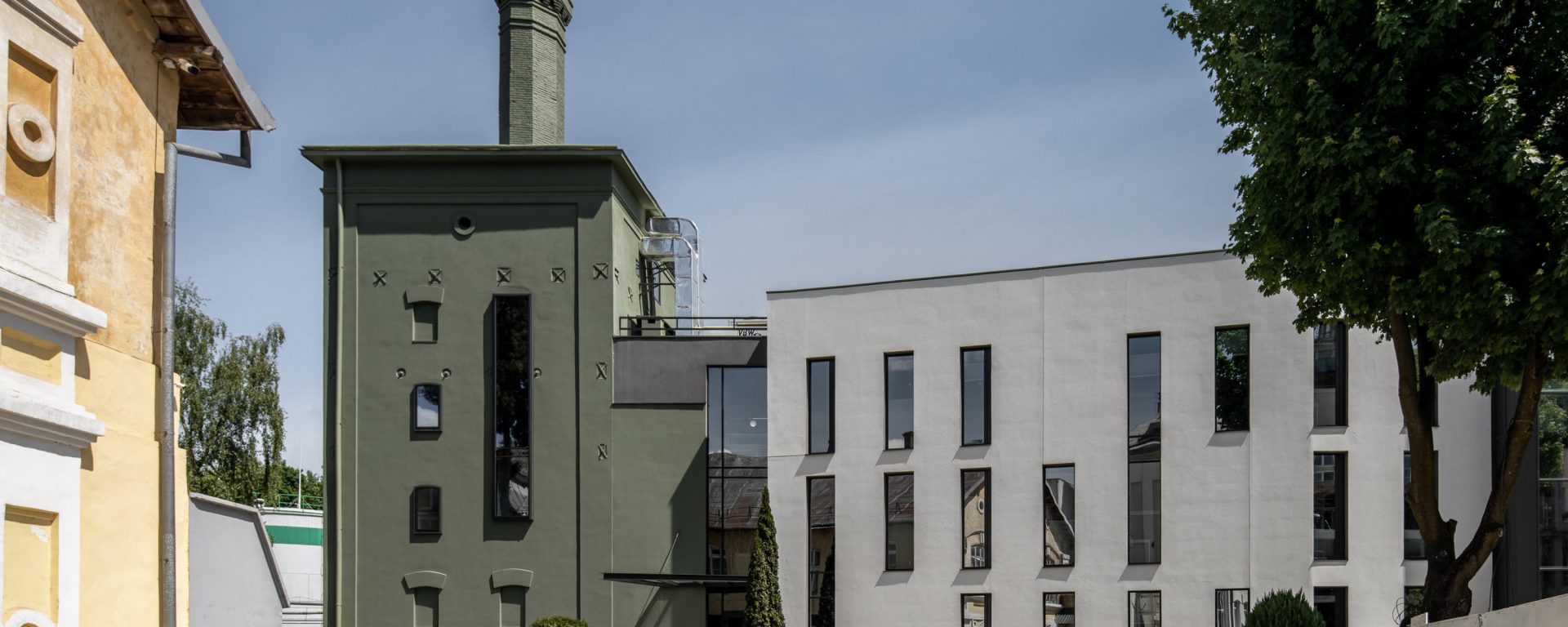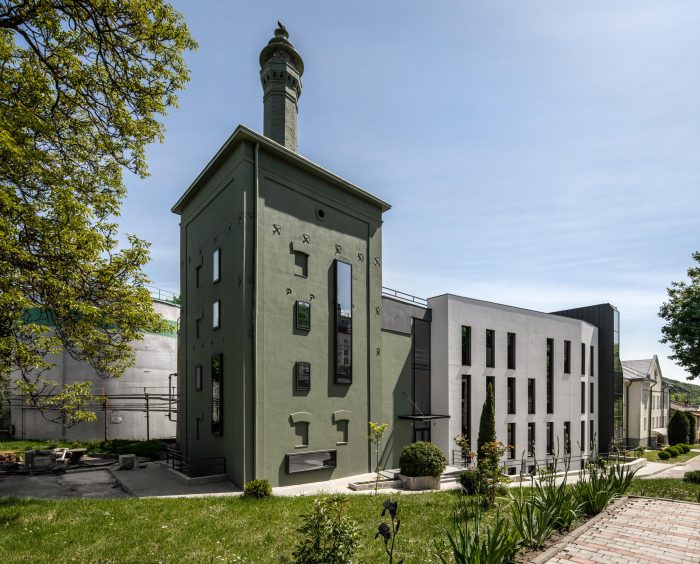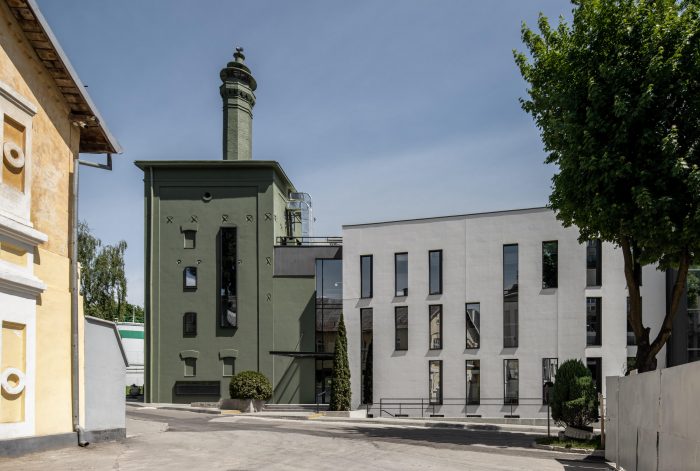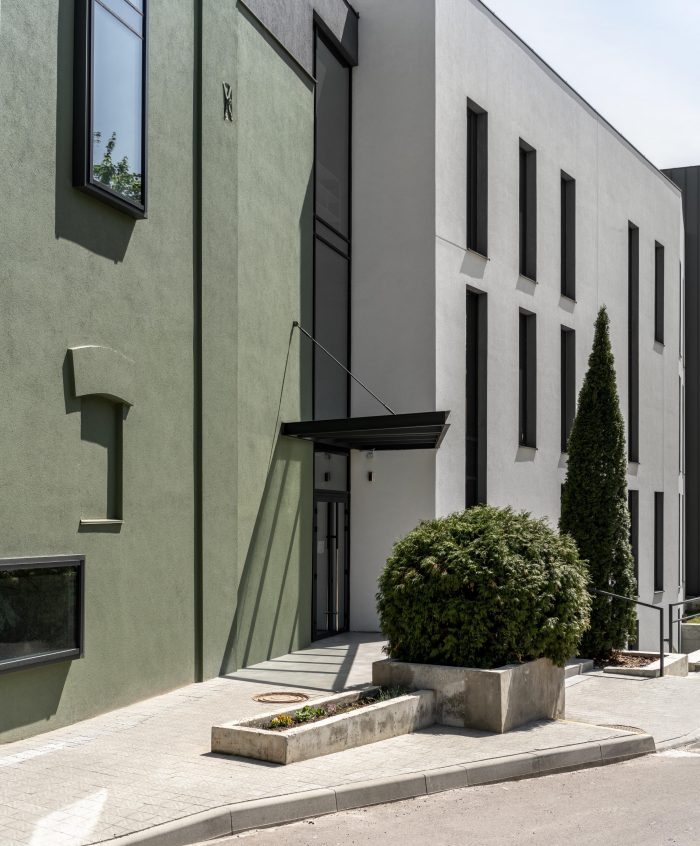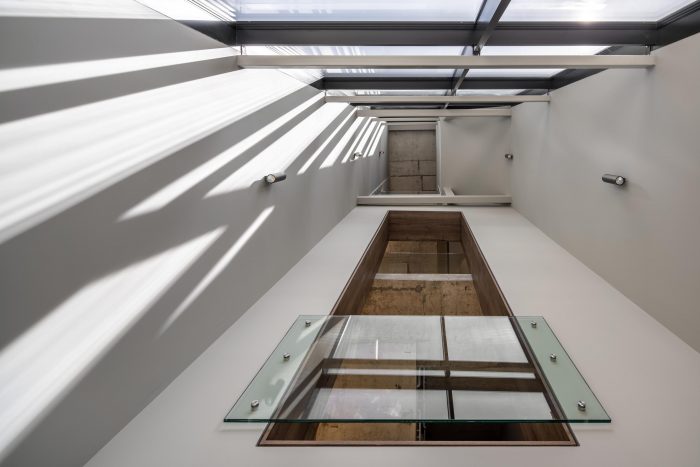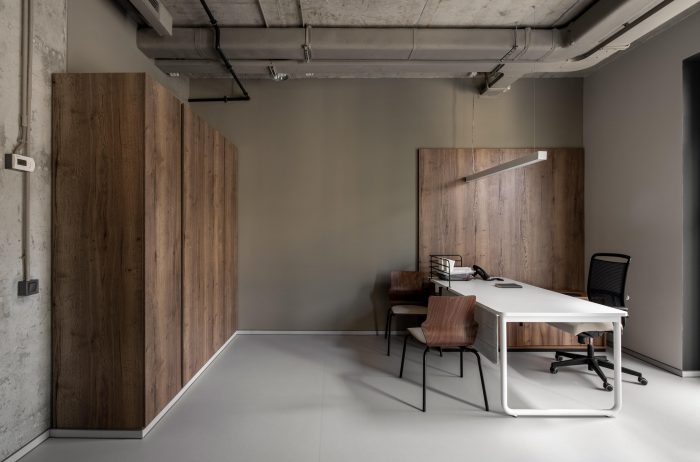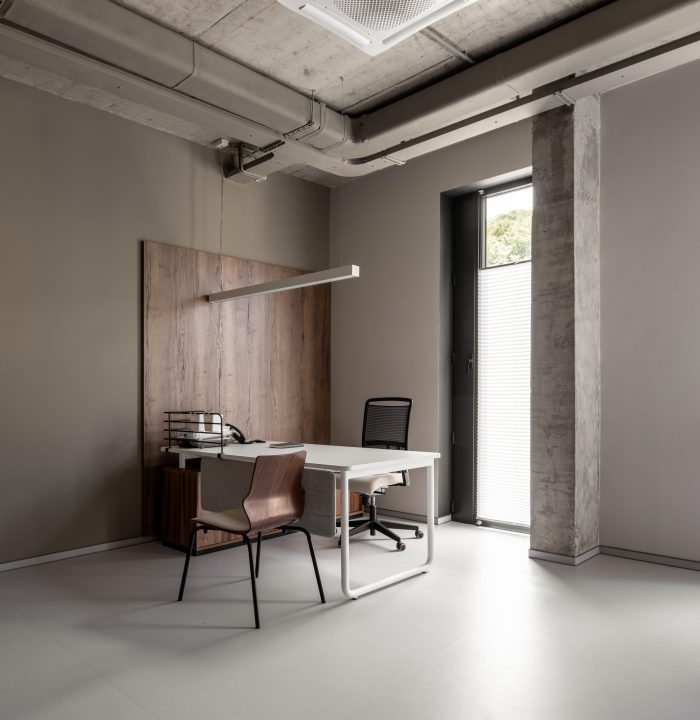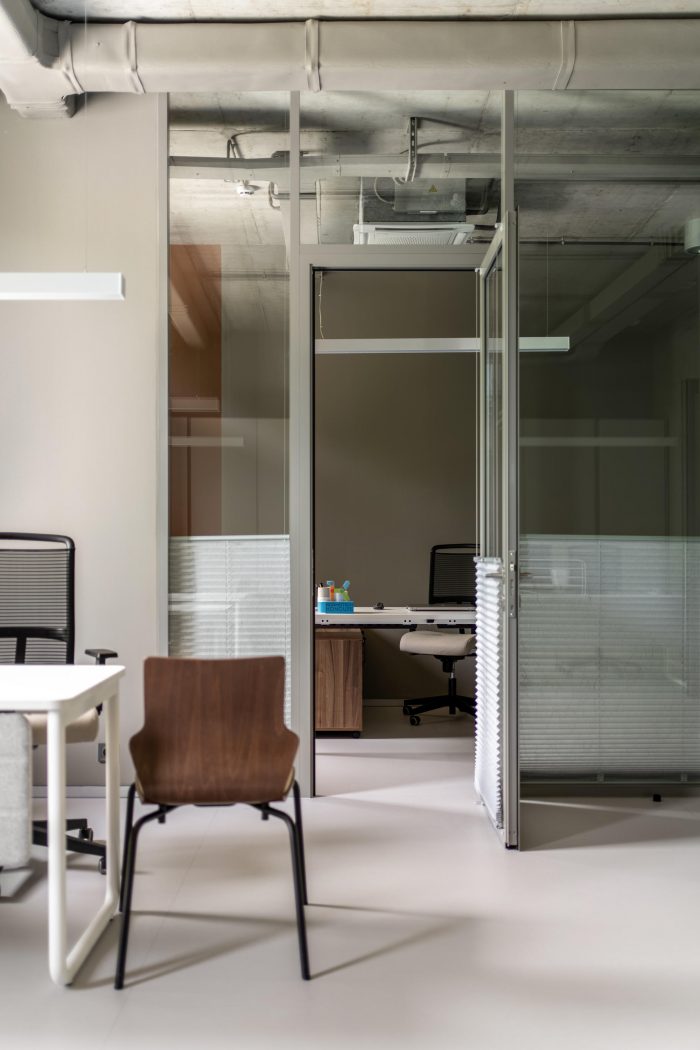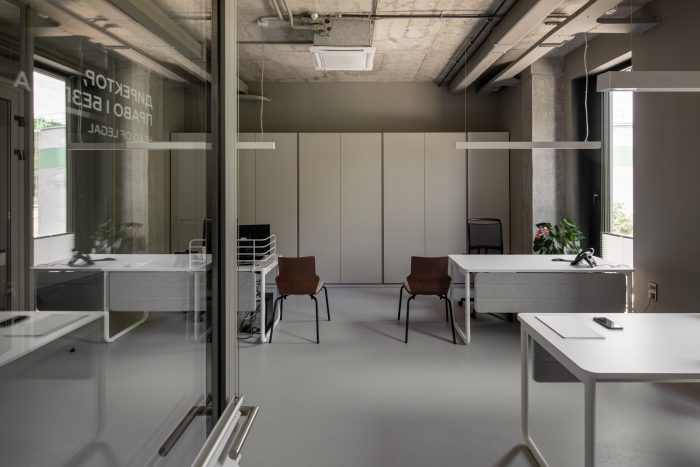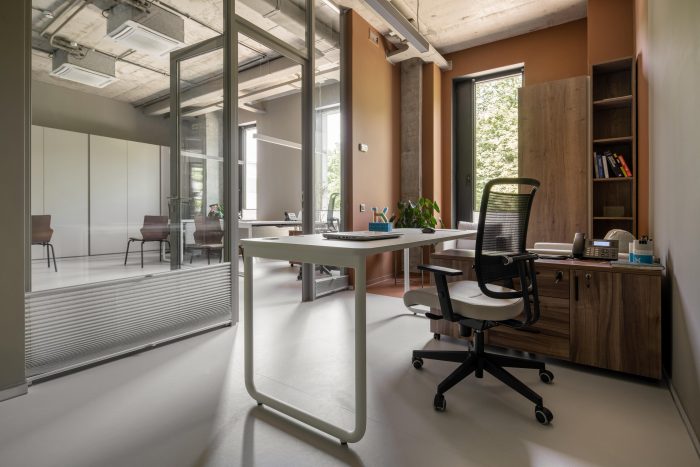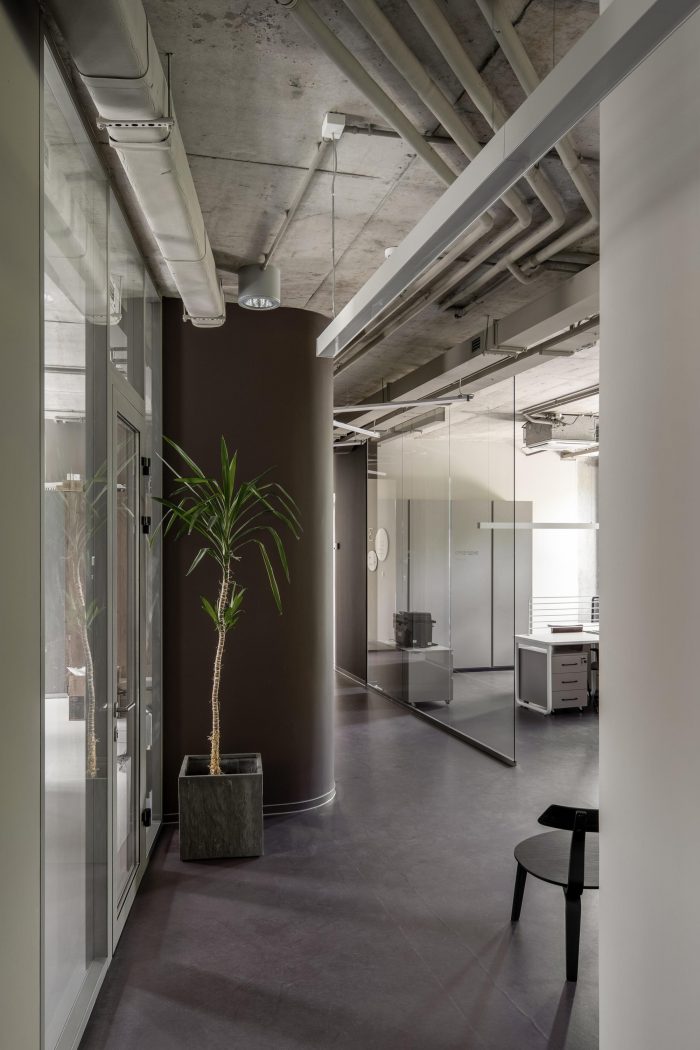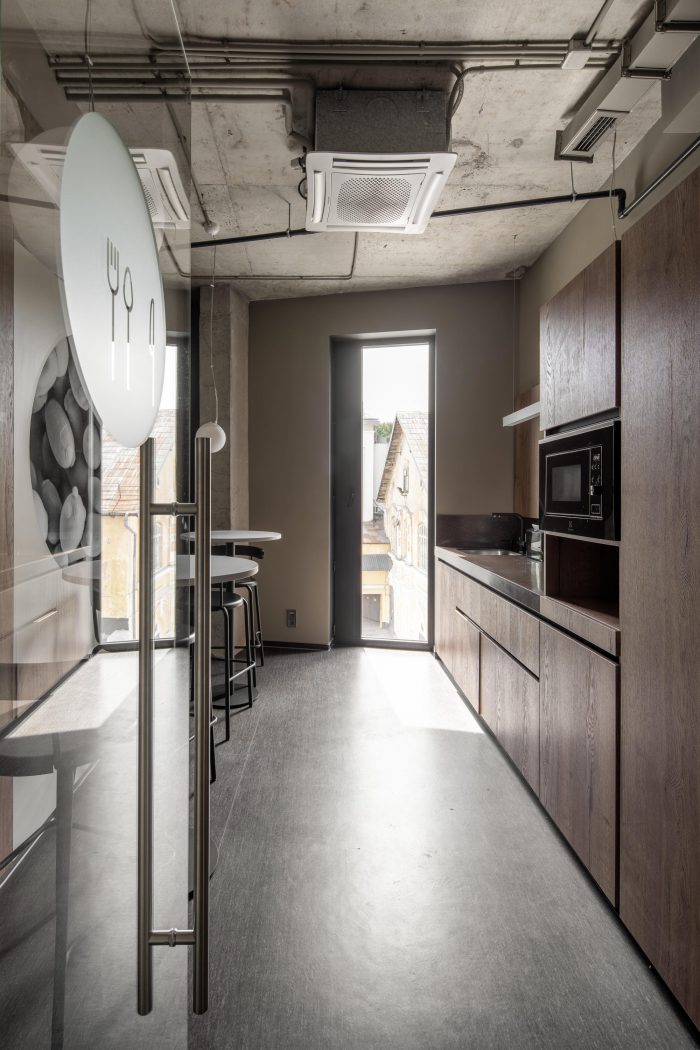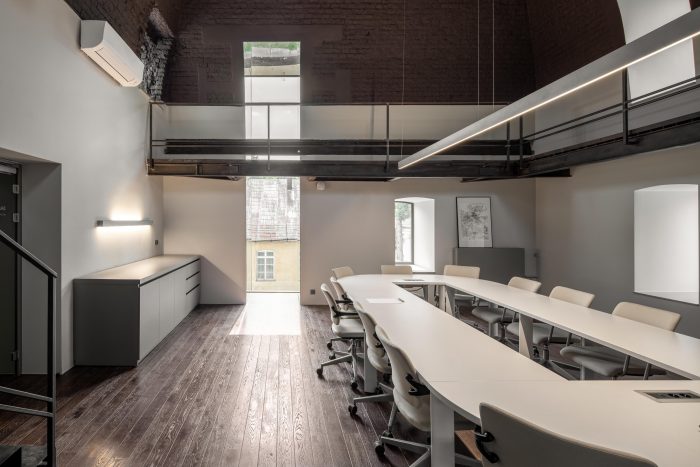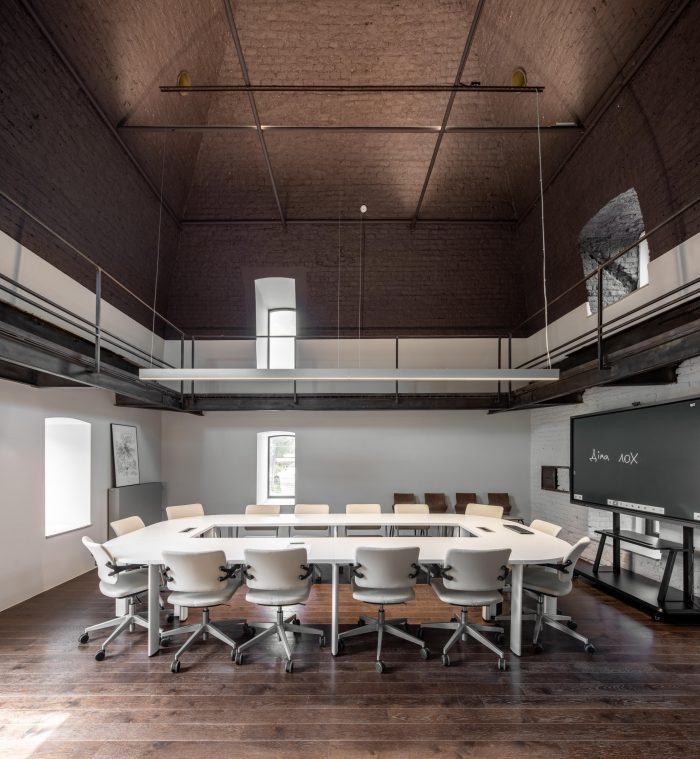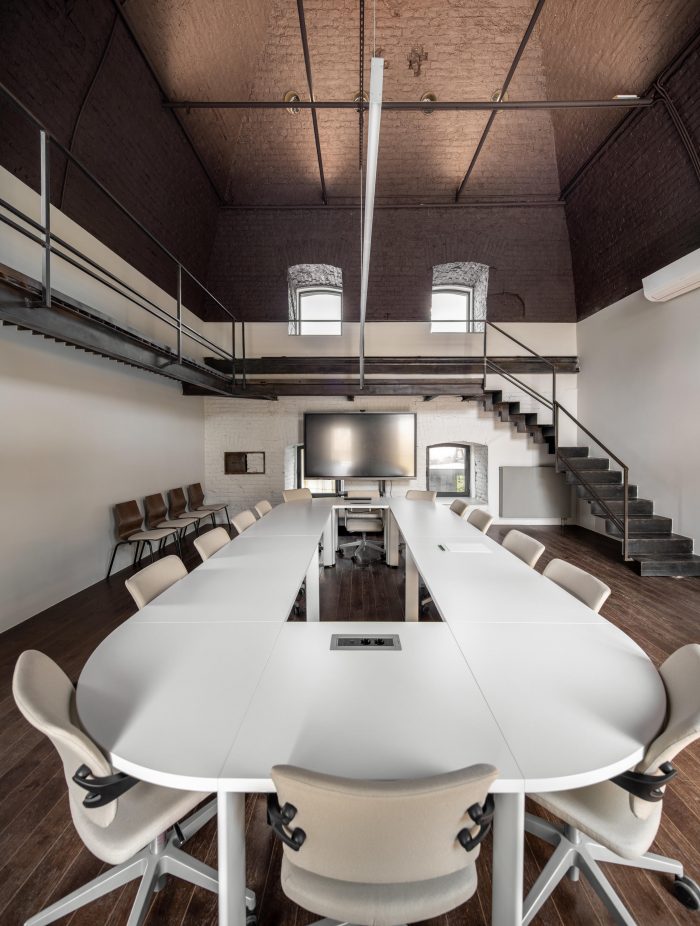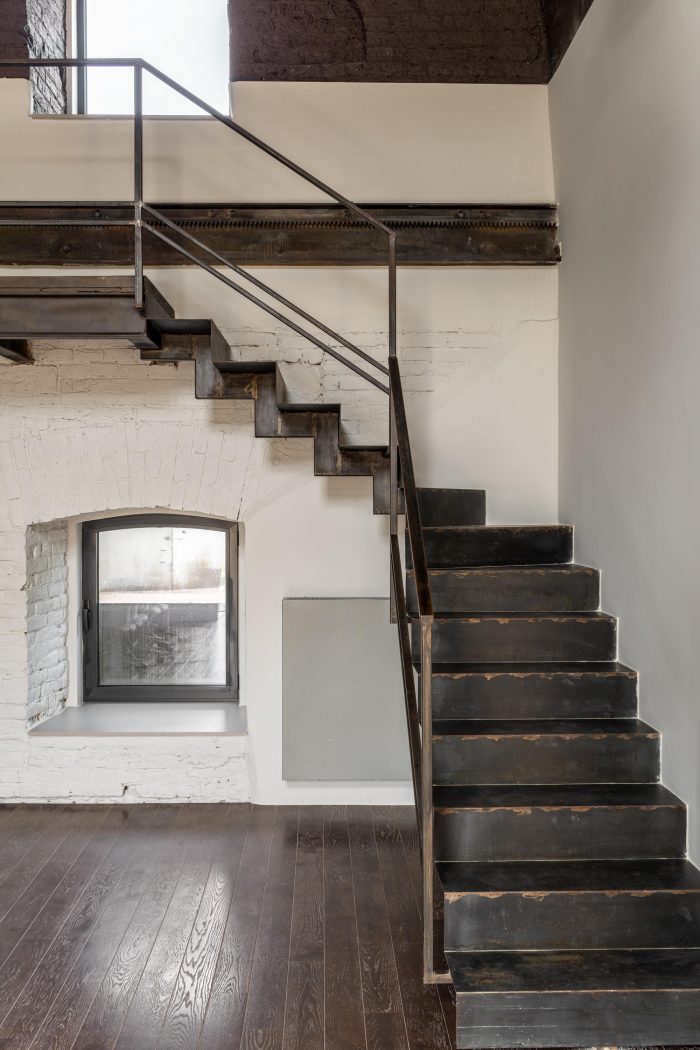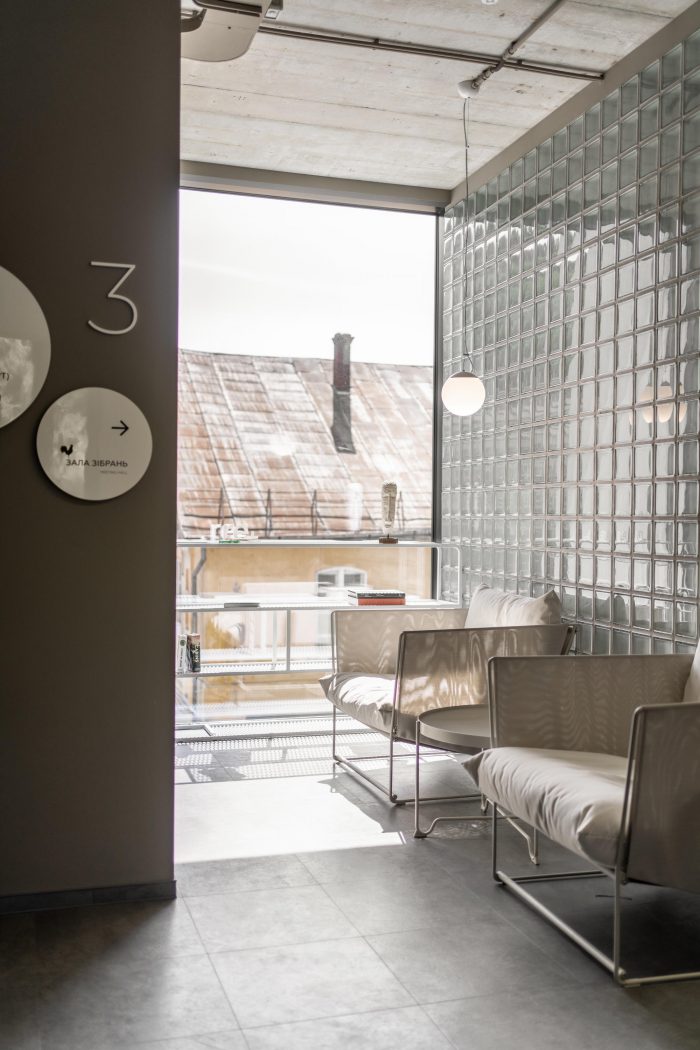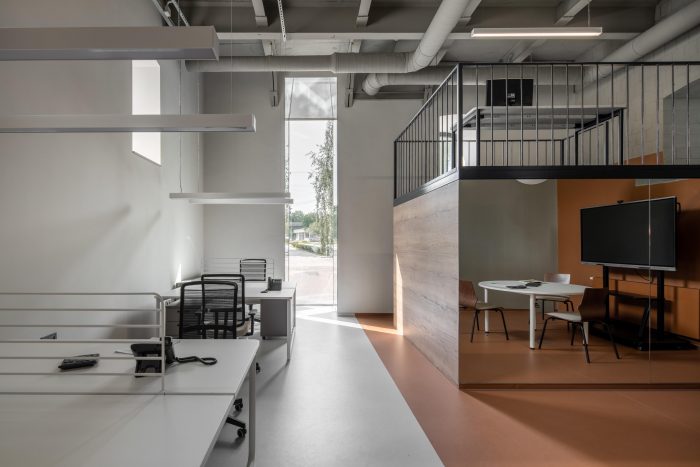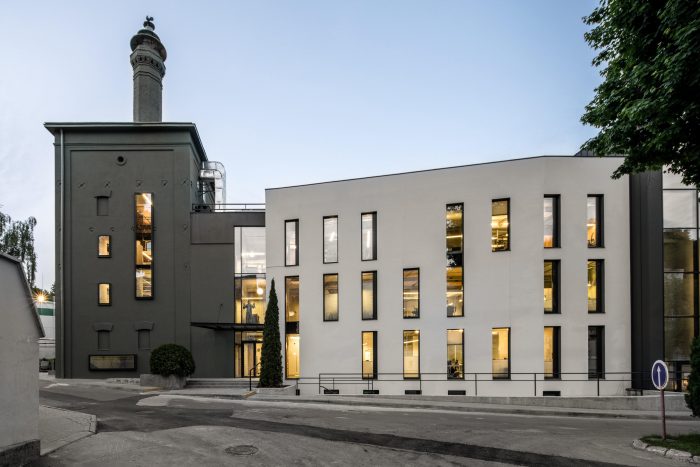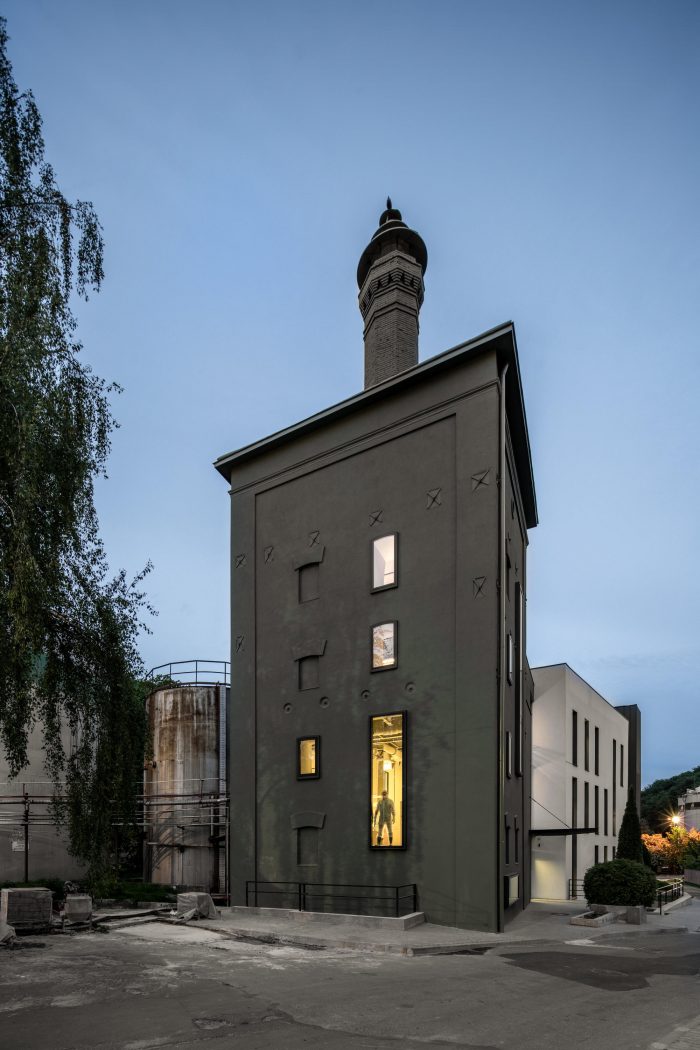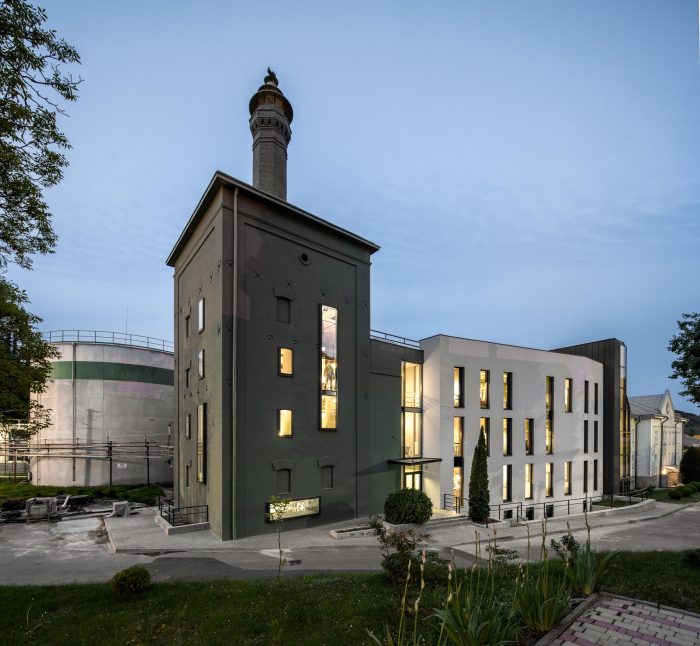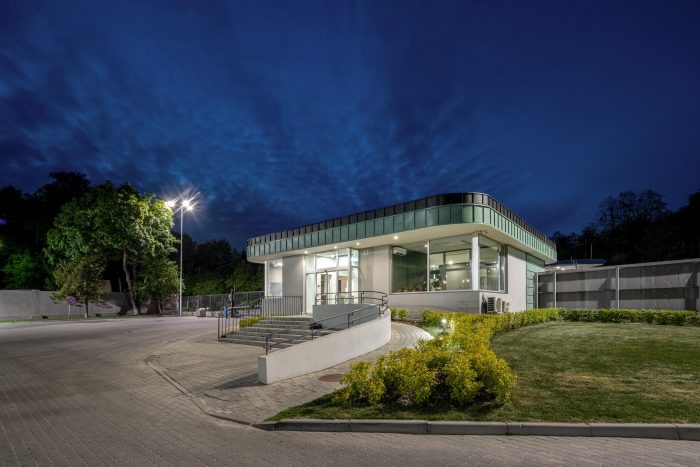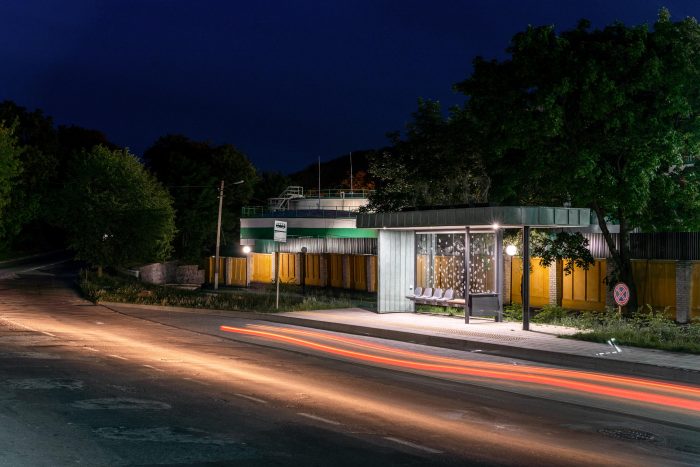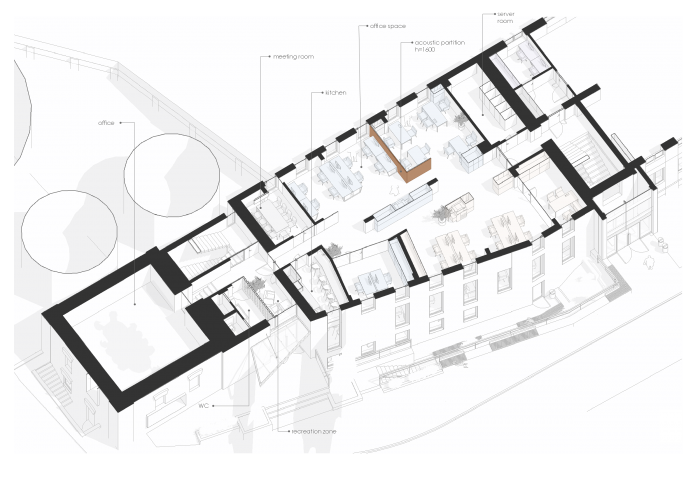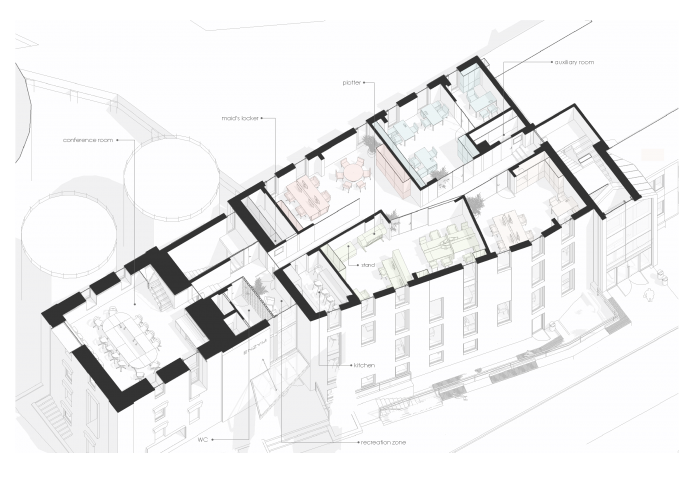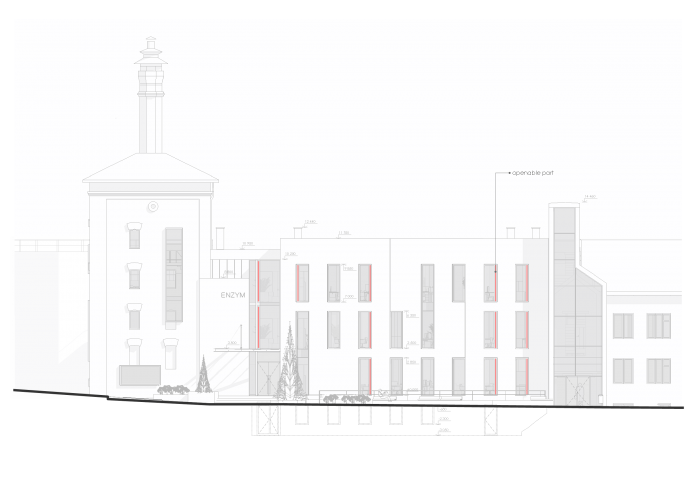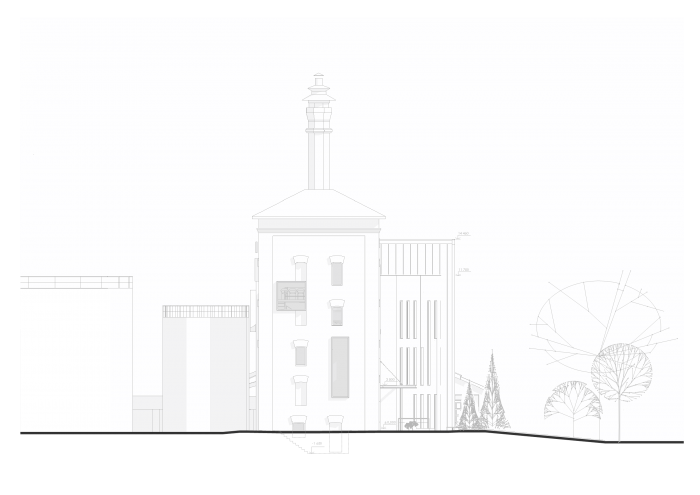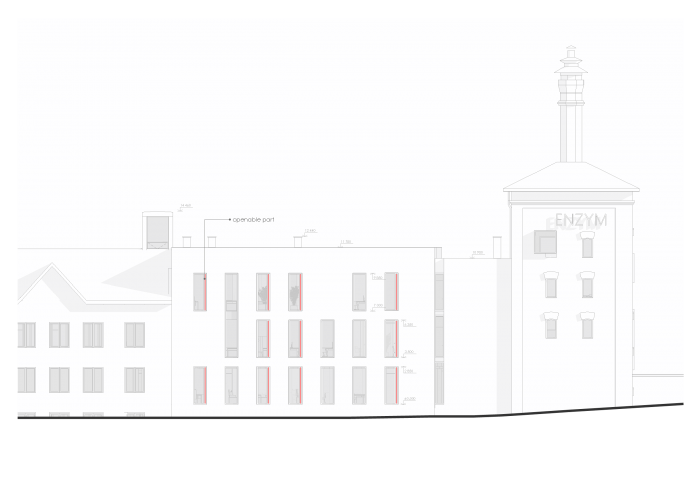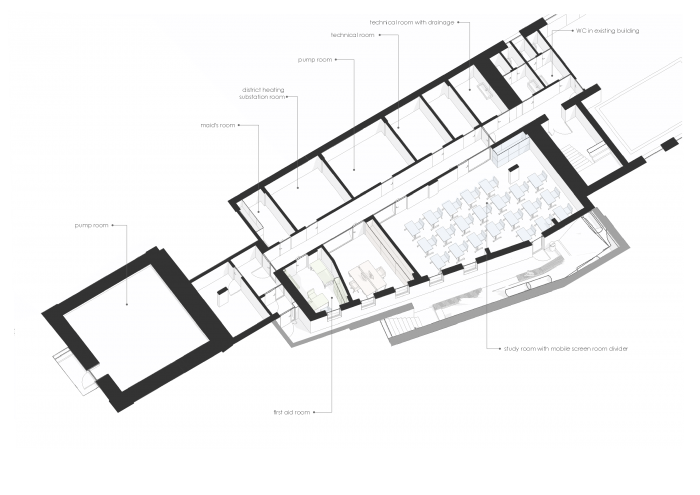这个项目是由总部位于利沃夫郊区的一家名为酶的公司委托进行的。这个项目很复杂,到目前为止已经完成了一部分。最初,该项目包括一个入口组的改造。后来,Replus局的建筑师决定更进一步,在10到20年的时间框架内为工厂的整体改造提出一个视觉规划。
首先,他们完成了项目中涉及新入口群和邻近区域的部分,包括停车场和公共交通站点。它没有任何昂贵的解决方案,一切都需要简单和功能,现代和舒适。为了突出入口组的装饰部分,他们使用了绿色,公司的新品牌的颜色,和镀铜的颜色。他们的下一步是从零开始建造一座新的办公楼。
This project was commissioned by a Lviv-based company Enzym headquartered in a wooded area on the outskirts of the city. The project is complex, and to date has been implemented partially. Initially, the project consisted of the renovation of an entrance group. Later on, the architects at the Replus bureau decided to go further and present a visual plan for the total renovation of the factory with the time frame of ten to twenty years.
Firstly, they completed the part of the project involving the new entrance group and the adjacent territory including parking lots and public transport stops. It was done without any expensive solutions, everything needed to be simple and functional, modern and comfortable. To accentuate the decorative part of the entrance group they used green, the company’s new brand colour, and the colour of patinated copper. Their next step was to build a new office building from scratch…
客户选择了一个相对狭窄的站点。它位于现有的办公大楼和一座19世纪中期未使用的旧砖结构建筑之间。建筑师必须为其他现有建筑发展长远的眼光,例如扩大、翻新和增加上层建筑。他们设计了一个更加突出的玻璃楼梯和一个入口,现在把现有的办公室和新建筑分开。它将是未来所有建筑的主要入口。“我们的项目需要大量的空间,所以我们几乎利用了所有远离工厂建筑的区域。”我们在主入口附近留下了一些空地,以确保建筑群更好地保持平静,”Replus事务所的首席建筑师和联合创始人德米特罗·索罗卡维奇(Dmytro Sorokevych)说。由于新建筑最初的目的是为员工提供舒适和最佳空间,而不是作为代表处,因此他们保持了其外观设计的简单和舒适。
建筑师想要清理和暴露旧历史建筑的砖。最初,该项目的这一部分得到了工厂管理部门的批准。然而,由于这座建筑经历了无数次的重建,它的墙壁也处于糟糕的状态,这个想法被放弃了。因此,在工厂的新环境中出现的镀铜颜色被选择。选择大窗户也使该建筑适合办公空间。他们还在外面的斜坡上安装了镜子,以掩盖近一米宽的墙壁。在建筑的顶层,一个两层的会议室由真实的拱顶、金属阳台和超过150年的承重结构组成。会议室内部简约而明亮。无盖的管道和电线、玻璃砌块、弯曲的工作站框架和裸露的混凝土墙创造了工业和实验室的氛围。木制的纹理和天然的油毡安全舒适的办公室。作为最后一笔,乌克兰艺术家Andriy Linik将楼梯用作工厂历史博物馆。Dmytro Sorokevych总结道:“从情感上讲,我们希望这个设计能体现丹麦和德国工厂的实用主义和精准性。”
The client chose a relatively narrow site. It was located between existing office buildings and an unused old brick structure dating from the mid-19th century. The architects had to develop a long-term perspective for other existing buildings e.g. enlarging, renovating and adding superstructures. They designed a more accentuated glass staircase and an entrance that now separates the existing office from the new building. It will be the main entrance to all the buildings in the future.”Our project required a lot of space, so we used practically all the area free from factory buildings. We left some empty space near the main entrance to ensure a better composure of the complex”, said Dmytro Sorokevych, the lead architect and co-founder of the Replus bureau.Since the new building was meant for comfort and optimal space for employees in the first place, rather than being a representative office, they kept its façade design simple and functional.
The architects wanted to clean and expose the bricks of the old historical building. Initially, this part of the project was approved by the factory’s administration. However, since this building had suffered from numerous reconstructions and its walls were in poor condition, the idea was abandoned. Thus, the colour of patinated copper, present in the factory’s new environment, was chosen.Opting for large windows made the building also suitable for office space. They also put mirrors on the outside slopes to disguise almost one-meter wide wall.On the top floor of the building, a two-level conference room was made with authentic vaults, metallic balconies and parts of over 150-year-old load-bearing structures. The conference room has minimalistic and light interior. Uncovered plumbing and wiring, glass blocks, bent frames of workstations and bare concrete wall finish create an atmosphere of industrial and laboratory premises. Wooden textures and natural linoleum secure comfort in the office. As a final touch, Ukrainian artist Andriy Linik has used the staircase for a factory history museum.“Emotionally, we wanted that the design reflects pragmatism and precision of Danish and German factories”, summed up Dmytro Sorokevych.
设计:replus design bureau
摄影: Andrey Bezuglov
首席建筑师: Dmytro Sorokevych
设计团队: Malets Andrii, Chyzhovskyy Michael, Zhuk Igor, Kulchytckyy Vitalii, Mykola Kniaz, Orest Mosiievskyi
工程: ABMK project development
景观: Lyudmyla Vorobjova
合作者: Andriy LinikDesign:replus design bureau
Photograph: Andrey Bezuglov
Lead Architects: Dmytro Sorokevych
Design Team: Malets Andrii, Chyzhovskyy Michael, Zhuk Igor, Kulchytckyy Vitalii, Mykola Kniaz, Orest Mosiievskyi
Engineering: ABMK project development
Landscape: Lyudmyla Vorobjova
Collaborators: Andriy Linik

